Imagine proposing marriage by just saying, "Hey, let’s get married." No ring, no heartfelt speech, no plan — just an idea. Chances are, that proposal won’t get a "yes". The same goes for academic research proposals!

A strong research proposal needs more than just a good idea. When you pop the question, you must make it POP:
Present the Problem
Overview Past Research
Plan the Method
Get these three components — Introduction, Literature Review, and Methodology — right, and your research proposal will get a "yes" faster than a wedding proposal with a diamond ring! 💍
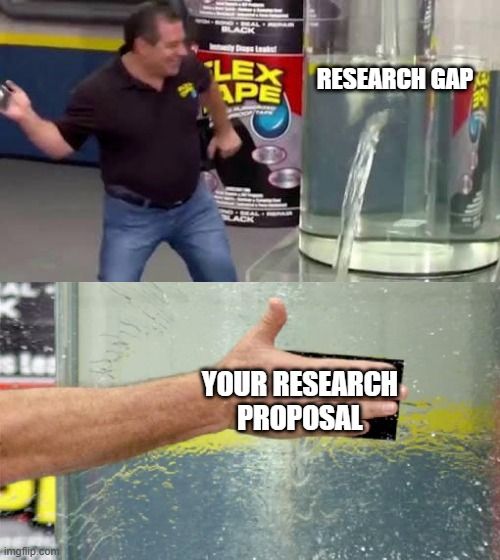
P: Present the Problem
First things first: present the problem your proposal is tackling in the "Introduction" component of your research proposal. Think of this as your chance to convince the panel that your topic actually matters. If they don’t see why it’s important, they won’t care about the rest!
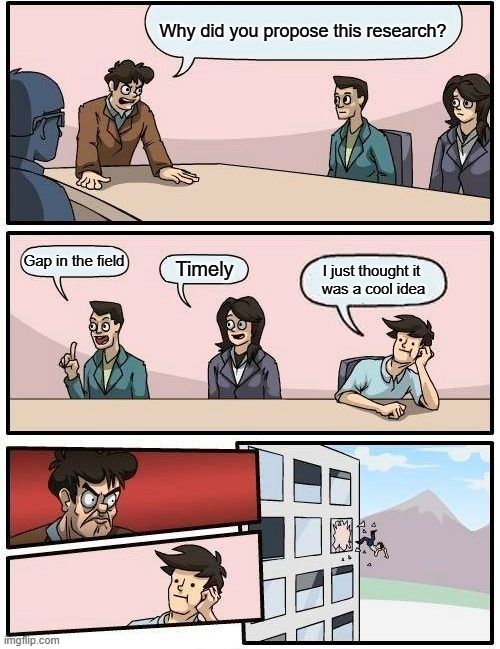
Subcomponents 📝
Background of the Study: Provide context and explain why this topic is important.
Statement of the Problem: Clearly define the issue your research will tackle.
Research Objectives/Questions: Outline what the study aims to achieve or the specific questions it seeks to answer.
Significance of the Study: Highlight who will benefit from the research and how.
Other subcomponents may be included in your research proposal depending on the requirements of your institution. Check out this Byte to explore optional components and how they can enhance your research proposal.
Helpful Tip 💡
Use the TIOC approach when drafting this component.
Trends: What are the current developments or trends in your research area?
Issues: What specific problem does your research aim to address?
Objectives: What are the objectives of your study?
Contributions: How will your research contribute to the existing body of knowledge in the field?
Now Try This! 🎯
Read this example carefully and identify which subcomponents are present.
Many parents, once they enrolled their children, became passive in their child's education... In light of this, the researchers aimed to assess the parental involvement strategies associated with students' academic achievement, which could be used by teachers as the basis for an intervention program.
Quiz
Which subcomponents of an introduction are present in the given text?
O: Overview Past Research
Once you’re done with your Introduction and have clearly stated your research questions, it’s time to dive into the review of related literature.
To provide an overview of past research in your research proposal, you’ll use existing literature to answer each research question you posed to highlight what’s already known and where the gaps are.
Subcomponents 📝
The "Review of Related Literature" component of your research proposal is typically organized based on your research questions. You may turn your research questions into statement forms that could serve as your headings. For example:
Research Question: What are the common problems and issues encountered by teachers regarding parental involvement?
Literature Review Heading: Common Problems and Issues Encountered by Teachers Regarding Parental Involvement
Tools 🛠️
There are powerful tools to find academic research and manage references. (⭐ marks my top picks!)
 Search Engines and Databases
Search Engines and Databases
Provide access to scholarly articles, journals, books, and papers.
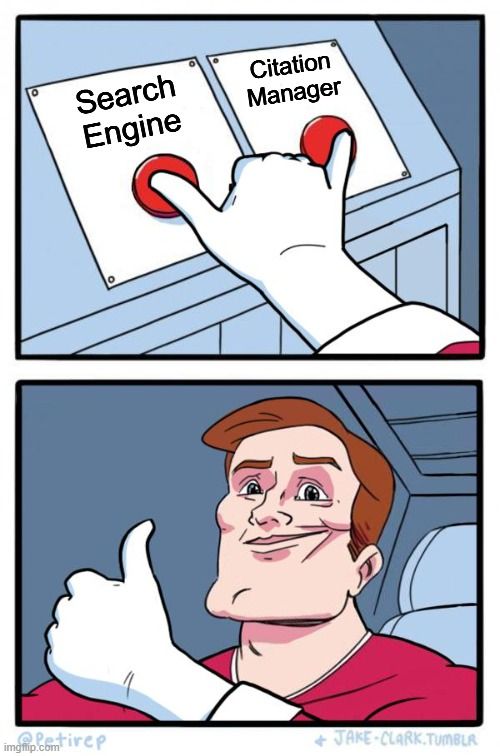
Helpful Tips 💡
Use a literature review matrix to keep track of key details from multiple sources. Organize studies by author, year, methodology, key findings, and relevance to your research questions — this will make it easier to spot trends, gaps, and connections!
Boolean operators can help you narrow your search. To learn more about optimizing your search strategy, check out this Byte: How do I use different search platforms to find the info I need?
Now Try This! 🎯
Take a look at the two literature reviews below from a research proposal:

Parental involvement has been widely studied in relation to student achievement. Singh (2016) identified mentoring as a key factor in Mathematics performance, whereas Mathipa (2014) focused on awarding schemes and recognition strategies.

A growing body of research confirms the positive impact of parental involvement on Mathematics performance (Singh, 2016; Mathipa, 2014). However, recent studies reveal gaps in understanding the challenges teachers face when engaging parents (Carter & Lee, 2020).
Quiz
Which example best demonstrates a good literature review?
P: Plan the Method
Now that you’ve introduced your research problem and explored what’s already known, it’s time to explain how you’ll answer your research questions in the "Methodology" component of your research proposal.

Subcomponents 📝
Research Design: Describe the type of study (e.g., qualitative, quantitative, mixed-methods) and why it fits your research.
Sample/Sampling Procedure: Explain who or what you’re studying and how you’ll select your participants.
Data Collection Methods: Detail how you’ll gather your data (e.g., surveys, interviews).
Data Analysis: Describe how you’ll interpret the data (e.g., statistical tests, thematic analysis).
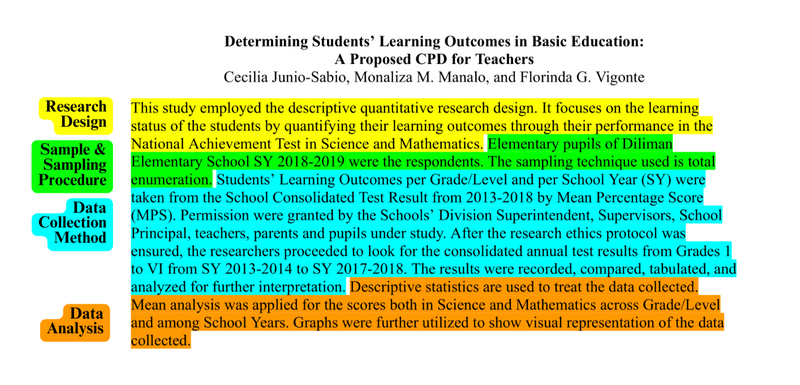 To hear an audio version of the above Method component, click play on the audio player below:
To hear an audio version of the above Method component, click play on the audio player below:
Helpful Tip 💡
Use a decision tree to find the best research method for your proposal.
Now Try This! 🎯
Read this example carefully and identify which subcomponents are present.
The descriptive correlational method of research was utilized in this study to determine if there is a relationship between parental involvement strategies and students' academic performance... The relationship between these two variables was analyzed using correlation and regression analysis.
Quiz
Which subcomponents of methodology are covered in the example above? Select all that apply:
Take Action
Introduction, Literature Review, and Methodology — get these components right, and your proposal will be on the path to success! But don't get too excited, there are still a lot of revisions before you can enjoy that sweet "yes"!
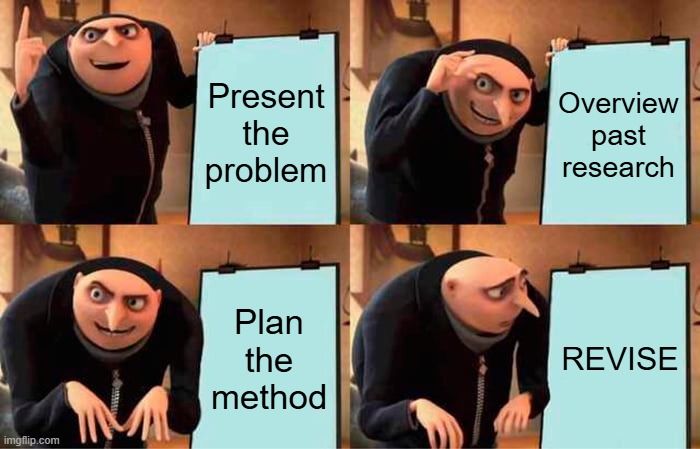
It's a long journey ahead, so buckle up! Remember to make your research proposal POP!
Your feedback matters to us.
This Byte helped me better understand the topic.

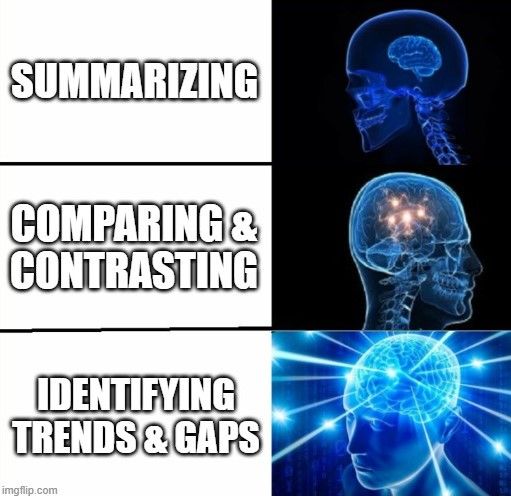
 Citation Manager
Citation Manager